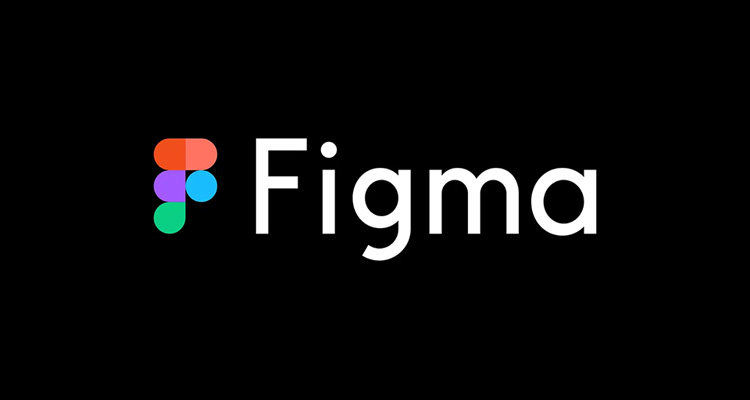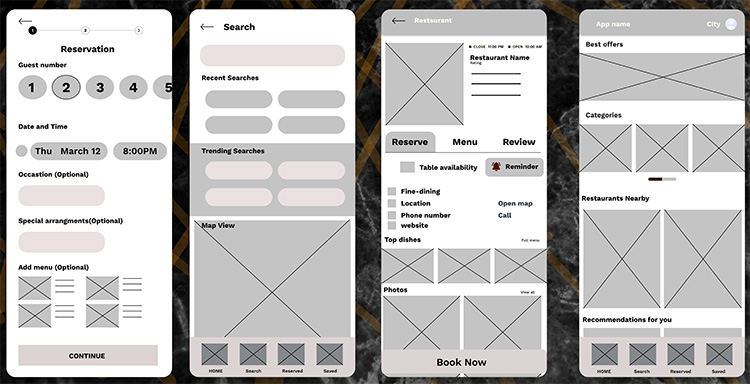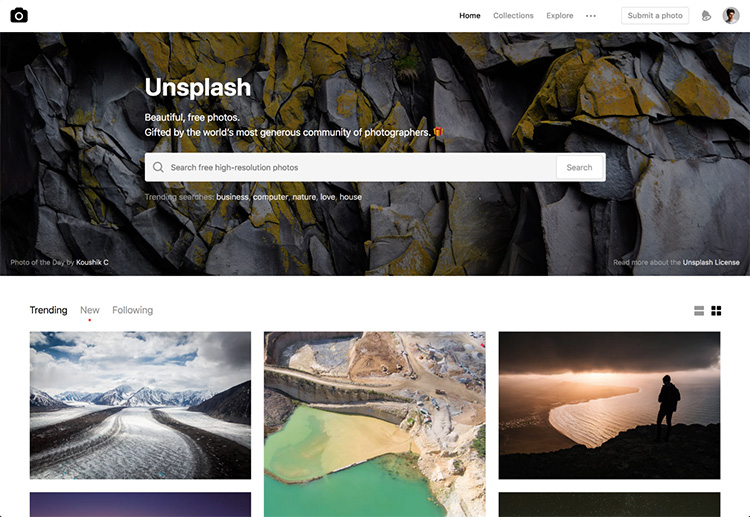How to Use Figma for Web Design: A Detailed Guide
![]() by Fabio Peters
by Fabio Peters

What is Figma?
Figma, in a nutshell, is a digital haven for designers and developers alike. As a web developer who’s ventured through a labyrinth of design tools, Figma stands tall as a collaborative powerhouse.
It’s an all-encompassing cloud-based platform that simplifies the entire design process, from sketching concepts to pixel-perfect prototypes. What sets it apart?
Real-time collaboration that transcends geographical boundaries and the unparalleled convenience of version history.
Figma is more than just software; it’s an ecosystem that fosters creativity and productivity.
Can I use Figma to design a website?
Figma is like your trusty Swiss Army knife in the world of web design.
It offers a robust suite of tools that simplify the entire design process, from conceptualizing your website’s look and feel to crafting pixel-perfect layouts and interactive prototypes.
One of Figma’s standout features is its collaborative nature, serving as a digital design studio where teams can work together in real-time from anywhere in the world.
For web developers, this collaboration is invaluable as it bridges the gap between design and development, ensuring alignment between the two disciplines.
Figma’s Design Capabilities
Figma’s design canvas is highly versatile and user-friendly, allowing for the creation of wireframes, mockups, and intricate web designs with ease.
The grid system and layout tools maintain the alignment of design elements, which is essential for a visually appealing website.
What truly distinguishes Figma from a developer’s perspective is its seamless transition from design to development.
It automatically generates CSS, HTML, and image assets, reducing the risk of misinterpreting design elements and allowing developers to spend more time writing efficient code.
Figma’s Benefits for Web Developers
Figma offers an extensive library and component system that functions like Lego blocks for designers and developers.
These tools enable the creation and reuse of design elements, ensuring consistency and saving valuable time, especially when working on complex websites.
Additionally, Figma’s prototyping feature allows web developers to bring their designs to life by adding interactive elements and transitions, making it easy to present their vision to stakeholders or conduct user testing.
From a web developer’s perspective, Figma goes beyond being just a design tool. It serves as a crucial companion in creating web experiences that are both functional and visually stunning.
Figma fosters collaboration, streamlines the design-to-development process, and empowers developers to build websites that truly shine, making it an essential tool for any web development project.
A Comprehensive All-in-One Design Solution
Figma isn’t just easy—it’s like a breath of fresh air in the often complex world of web design. Its intuitive interface welcomes both beginners and seasoned designers with open arms.
The beauty lies in its ability to encompass the entire design process under one roof, from wireframing and mood boards to prototypes and handoff to developers.
It streamlines the design-to-development pipeline like a well-oiled machine, and as a developer, that’s music to my ears.
Figma or Adobe
The age-old debate between Figma and Adobe rages on, and from a developer’s standpoint, the scales are tipping.
While Adobe has long been the reigning champion, Figma’s cloud-based approach and collaborative prowess give it a competitive edge.
The real-time collaboration, cloud storage, and handoff features make Figma an enticing choice for web developers.
It’s not about replacing Adobe but about recognizing that Figma complements the modern workflow, making collaboration with designers smoother and the development process more efficient.
Figma Wireframing: Streamline the Design Process

Wireframing is the blueprint of web design, and Figma handles it like a pro. The grid system, layout tools, and versatile canvas let you sketch out the skeleton of your web project effortlessly.
As a developer, I appreciate how Figma simplifies the process by allowing me to work closely with designers and iterate on wireframes in real-time.
This real-time collaboration ensures that wireframes evolve into designs that are not just beautiful but also feasible to implement.
Enhancing Your Creative Brief with Figma
Creating a creative brief is where the journey begins, and Figma becomes your trusty companion.
You can craft the perfect creative brief by combining text, images, and even interactive elements, ensuring that everyone on the team is on the same page.
Figma’s tools facilitate clear communication and collaboration, setting the stage for a project that’s aligned with your vision and goals as a developer.
Crafting Mood Boards
Mood boards are the soul of design, and Figma gives designers the canvas to express their creative souls. It’s the place where colors, textures, and typography merge into a visual story.
The interactive nature of Figma lets designers and developers build mood boards collaboratively, ensuring that the design’s visual tone aligns seamlessly with its functionality.
It’s a match made in creative heaven.
Efficient Importing and Exporting

In the real world of web development, the exchange of design assets is crucial. Figma simplifies this process with its import and export capabilities.
It’s not just about graphics; it’s about a seamless transition from design to code.
Whether you’re importing design elements into your project or exporting assets for development, Figma ensures that nothing gets lost in translation.
Unsplash
As a developer, I understand the significance of high-quality images in web design. Figma’s integration with Unsplash is a godsend.
Access to a vast library of beautiful, high-resolution images within the design canvas is a game-changer.
No more hunting for stock images – they’re right at your fingertips, adding the finishing touch to your web project.

Lorem Ipsum
Placeholder text can be a headache, but not with Figma. Its integration with Lorem Ipsum ensures that you can easily generate filler text for your designs, saving you precious time that you can better spend on refining your web development.
Material Symbols
Material Symbols are a designer’s dream, and Figma understands that. With its integration, you can access and use Google’s Material Design Icons directly in your projects.
This not only streamlines the design process but also ensures a consistent and polished look for your web applications.
Transition to Prototype Mode with Presentation Mode
Figma’s presentation mode is like the red carpet for your design. It’s where your static designs transform into interactive prototypes that can be showcased to stakeholders or tested by users.
As a developer, this feature provides an invaluable tool for presenting the user experience and behavior of the final product, making it a breeze to get buy-in and feedback.
Mastering Template Creation
Master templates are the foundation of design consistency, and Figma lets you build them with ease.
With a master template, you can ensure that your design elements, from headers to footers, remain uniform across your web projects.
This consistency is a boon for developers, as it streamlines the coding process and guarantees a cohesive user experience.
Building Design Systems
Design systems are the lifeblood of modern web development, and Figma empowers you to create and manage them efficiently.
With clear organization of design tokens, color styles, typography, and components, you can maintain a consistent design language across your projects.
This is a developer’s dream, ensuring that you can efficiently build and maintain web applications while keeping the design on-brand and pixel-perfect.
Fostering Collaboration and Gathering Feedback

Web development is often a team effort, and Figma’s collaboration features are a breath of fresh air.
Real-time collaboration and commenting allow designers and developers to work closely together, ensuring that the design aligns with the development process.
The ability to leave comments directly on the design canvas reduces the back-and-forth communication and streamlines the feedback loop.
From my experience, this level of collaboration is a game-changer in web design projects. It not only fosters a sense of unity within the team but also improves the efficiency and quality of the final product.
Collaboration is the heartbeat of Figma. It’s the secret sauce that makes web development and design work hand in hand.
Figma’s real-time collaboration, commenting, and version history features ensure that the design and development teams are in sync.
It’s a harmonious dance that results in a web project that’s not just visually appealing but also impeccably functional.
Navigating the Figma Interface
Figma isn’t just another design tool; it’s a comprehensive ecosystem designed to streamline the web design process.
As a developer, this approach resonates with me. Figma’s cloud-based platform allows for real-time collaboration, which means you can work seamlessly with your design team, no matter where they’re located.
This collaborative feature is invaluable for sharing ideas, gathering feedback, and ensuring the design aligns perfectly with your development goals.
One of the standout features of Figma is its version history. It allows you to revisit earlier iterations of your design, ensuring nothing is lost in the creative process.
This level of control is a lifesaver, especially when you’re working on complex web projects.
The Design Canvas
When it comes to using Figma for web design, the design canvas is where the magic happens. As a developer, you need a canvas that’s intuitive, flexible, and powerful.
Figma’s canvas fits the bill. Its versatility allows for creating wireframes, mockups, or pixel-perfect designs with ease.
The grid system and layout tools are second to none, making it simple to maintain consistency and alignment throughout the design.
Moreover, Figma’s vector editing tools are both intuitive and powerful, providing precise control over every element of your design.
As a developer, this fine-grained control is essential to ensuring that your vision translates into a web reality flawlessly.
Libraries and Components
From a developer’s perspective, reusability is a game-changer, and Figma delivers on this front with Libraries and Components.
Libraries allow you to store and manage assets, keeping your design elements organized and accessible across multiple projects.
This is a huge time-saver when working on web development projects with consistent design patterns.
Components, on the other hand, are building blocks of your design that can be reused and customized throughout your project.
Figma’s component system, often likened to the concept of design systems, empowers you to create a consistent user interface and maintain design integrity as you scale your project.
As a developer, I can’t stress enough how much easier this makes the transition from design to code.
Designing Prototypes with Interactive Elements
Creating static designs is only part of the equation. Effective web design involves user interaction, and Figma excels in this area as well.
With its built-in prototyping capabilities, you can bring your web design to life by adding interactive elements and transitions.
This is a fantastic feature for showcasing your design concepts to stakeholders or for user testing.
As a developer, I appreciate the ability to create interactive prototypes that provide a clear vision of how the final product will behave.
This not only streamlines the development process but also ensures that the end product meets user expectations.
Exploring Plugins and Integration Options
Figma’s extensibility is another aspect that sets it apart. The ability to extend the functionality of Figma with plugins is a boon for developers.
You can find a wide range of plugins that cater to different aspects of web design, from accessibility testing to asset management.
Additionally, Figma offers seamless integrations with development tools like Zeplin and Avocode, making it easy to transition from design to code.
These integrations ensure that developers receive design assets in a developer-friendly format, expediting the development process.
Facilitating Smooth Handoff to Development
From a developer’s standpoint, the handoff process is where the rubber meets the road. Figma streamlines this critical phase with its developer handoff feature.
It provides developers with all the assets and information needed to bring the design to life.
The developer handoff feature generates CSS, HTML, and image assets automatically. This not only saves time but also reduces the potential for misinterpretation of design elements during development.
As someone who has faced the challenges of translating design into code, I can attest to the significant benefits this feature provides.
Effective Design System Management
Design systems are at the heart of modern web development, and Figma makes it easy to create and manage them.
With a clear organization of design tokens, color styles, typography, and components, you can maintain a consistent design language throughout your web projects.
As a web developer, having a well-structured design system at your disposal is like having a well-organized toolbox.
It ensures that you can efficiently build and maintain web applications while keeping the design cohesive and on-brand.
Optimizing Performance and Scalability
Scalability is a primary concern for web developers, especially when working on large and complex projects.
Figma’s performance with substantial design files is impressive. The cloud-based system handles even the most extensive designs without a hitch.
This reliability is crucial when you’re dealing with intricate web applications or platforms.
Figma’s adaptability to different screen sizes, including mobile devices, is another standout feature.
Designing for responsive web experiences becomes seamless, ensuring that your final product is user-friendly on all devices.
Conclusion
Figma is more than just a web design tool; it’s a complete ecosystem that empowers web developers to create functional and visually stunning web experiences.
With collaborative features, a versatile design canvas, robust libraries and components, seamless prototyping, and efficient handoff capabilities, Figma is a dream tool for developers.
From initial sketches to the final handoff, Figma streamlines the web design process while providing the precision and control developers need.
It has become an indispensable part of my workflow, and I firmly believe it has the potential to revolutionize how developers and designers collaborate in the ever-evolving web development landscape.
Whether you’re an experienced pro or just starting your journey, Figma is a tool that can elevate your web design game to new heights.
Embrace it, and witness your web projects flourish. In a dynamic field like web development, Figma shines as a beacon of collaboration and efficiency.
From wireframing to prototyping, Figma offers a comprehensive suite of tools that simplify the design-to-development journey.
As a seasoned web developer, I’ve experienced the transformative power of Figma in real-world projects, and I can confidently attest to its game-changing potential.
Embrace Figma, and let it be your trusty companion every step of the way.
Editorial Process:
The reviews on this site are crafted through diligent research, collecting expert insights, and drawing from genuine, real-world experience. You can learn more about our editorial process here.
It’s worth noting that certain links within this article may be affiliate links. This means that if you choose to purchase a paid plan through these links, we may receive compensation at no extra cost to you. Rest assured, these are products and services that we have personally tested, used, and wholeheartedly endorse. We want to emphasize that our website is not intended to offer financial advice. Your trust and satisfaction are our top priorities.


